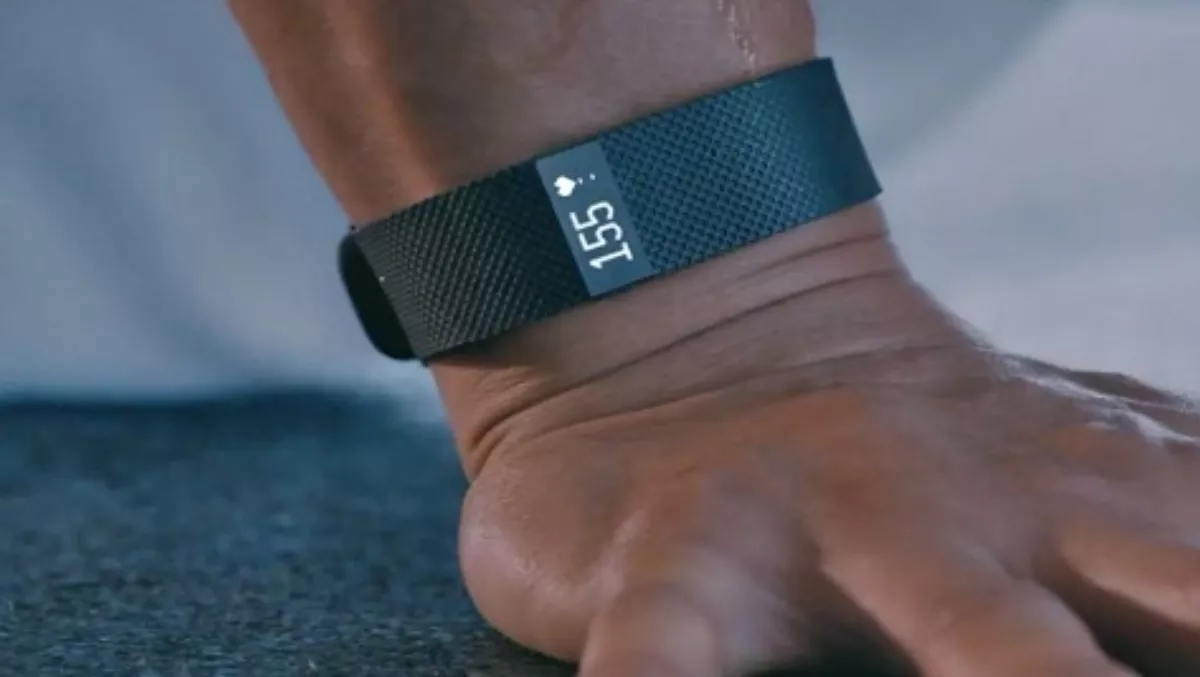
Over the last several months using various Fitbits, I feel I've become the Fitbit guru. I'm obsessed with them. I want to wear all the different kinds in all the different colours all at the same time. But that's just silly.
The thing about Fitbit is that the product doesn't look anything fancy or hi tech. In a good way. Before I was a wearables fan, one of the main things that put me off was how they looked. They were big, clunky, too gizmo-like, and so they looked a lot cheaper than their big price tags suggested. The Fitbit doesn't have this problem. They are subtle enough that you can wear them with anything – not just your work out clothes – and other people will probably not even notice them (except if you're constantly checking it, like me).
In short, besides how it clips together, the look of the HR is identical to the Charge. A basic band, a small LED screen and a tiny button on the side. Unlike the Charge, however, is the small addition to the underside of the Fitbit; its heart rate monitor. This keeps tabs on your pulse 24 hours a day.
The truth is, most fitness trackers released so far are just glorified pedometers. If you took the Fitbit app away, that's basically what the Flex and the Charge are. Data provided via a heart rate monitor, in comparison, gives the user a much better gauge on how they are tracking fitness-wise. The Charge HR shows you how hard your heart is working, which in turn will show you how many calories you are actually burning. You can see what exercises are making your heart beat faster, what exercises you've been coasting through, and therefore what exercises are better for your goals, whether it's losing weight or whatever.
As per the Flex and the Charge, the HR is very easy to use. You just pair it with your smartphone, enter some basic details into the app, and you're on your way. If you don't want to use the app or you've got an older phone, the wireless dongle it comes with allows you to sync all the information your Fitbit collects with your computer.
I do much prefer the Fitbit Charge wrist strap to the HR watchstrap. For one thing it's easier to put on, there's no need to fiddle with putting a watchstrap on. But the HR watchstrap is also more bulky, and I don't really like the way it looks. I've read other reviews that people thought the Charge wristband came off to easily, but I never experienced this. Like each Fitbit I've tried out, the new strap took a few days to get used to, but now I barely notice it.
Sometimes I feel like I have to constantly charge my HR. This is an unfair statement because the only reason I feel this way is because I hardly ever charged my Fitbit Charge, maybe once every couple of weeks. I do have to charge the HR more often, but perhaps once a week, which is a pretty sweet deal, considering Fitbit advertises the battery life at about 5 days.
The only thing I'm disappointed with in the Charge HR is that it's not waterproof. I went snorkelling for about two hours not realising I still had my Charge on my wrist, but luckily, and awesomely, it was fine. The Charge HR, on the other hand, may not have faired so well. You want to be able to shower and swim to your heart's content without freaking out you've destroyed a $200 wristband.
Sometimes I feel like I'm not a big enough athlete to justify the HR, and I should stick to the standard Charge and Fitbit app. But I like how the HR gives a more accurate depiction of the work I'm doing; how hard I'm working, how many calories I'm actually burning, instead of guestimating. While I exercise almost every day, I'm no althlete, and I don't constantly monitor my heart rate. I do however believe that people at this level of fitness would really benefit from the Charge HR, even as a gateway to more superior fitness trackers.
